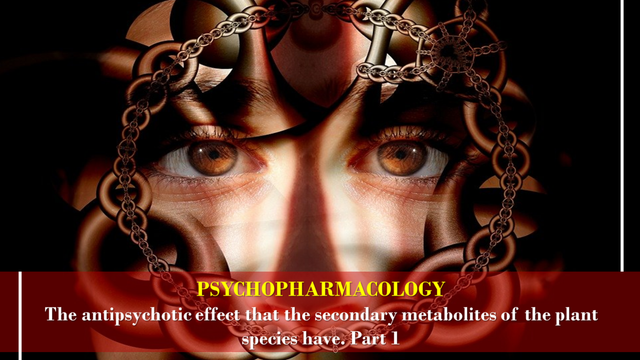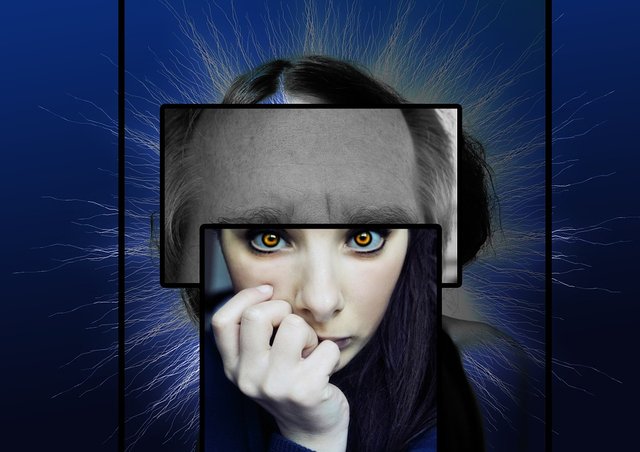
In order to continue presenting fresh and at the same time utilitarian information, based on the enormous potential that plants have in Psychopharmacology, I wanted to outline a new thematic approach and share it with all the users of the #Steem platform, especially with the friends of @Project.HOPE, this issue deals with the ANTIPSYCHOTIC effect that the secondary metabolites of plant species have, on patients suffering from Schizophrenia.
It is important to begin by indicating that, although specific clinical orientations coexist between synthetic pharmacology and phytopharmacology, in the case of psychology the content related to the drugs that are usually applied to treat multiple mental health problems, the information accessible to the general public is very limited. Therefore, with this publication I intend to make available to users of the #Steem platform the characterizations related to psychological profile treatments through the use of phytopharmaceuticals of recognized scientific value.
In this publication, it only presents scientific information related to one of the secondary metabolites, which may well be used in patients suffering from the psychopathology identified as Schizophrenia, in this sense, those who have a neighbor, friend, or family member suffering from this serious mental illness, whose manifestation is characterized by a significant loss of contact with reality, that in medical terms is known as psychosis, it is known that this disease manifests itself through a set of absurd behaviors, where the person who suffers it externalizes disturbances of perception and thought, both elements affect the form or style of relating to others, by exhibiting delusional qualities through misconceptions and a language of communication totally disorganized.

Fig. 2 A somewhat disoriented look and changes in the retina of the eyes are some of the symptoms suffered by people with schizophrenia. Image of public domain, Author: Geralt, 2014
Before continuing, it is very important to point out that, in spite of all the scientific advances of the last two decades, in these years of modernity in the medical field, the neuronal physiological disorders related to the appearance of schizophrenia are still unknown. However, it is assumed that this abnormal behavior is the product of a combination of genetic and environmental factors, Therefore, in an interpretative way, it is believed that certain adverse environments end up making chemical and structural alterations at the brain level, mainly by generating imbalances or deficits of the neurotransmitter identified as GABA (γ-aminobutyric acid). Therefore, drugs with antipsychotic action (drugs that generate a sensation of calm in patients with psychosis) are used .
With regard to plant-oriented Psychopharmacology, the species that is usually used for its antipsychotic action is Valeriana officinalis commonly known as Valerian, in general terms Valerian specimens have secondary metabolites with high concentrations of GABA (γ-aminobutyric acid), which favors its application as an alternative treatment and an effective phytodrug that can compensate the deficits of GABA, by inhibiting excessive discharges at the neuronal level, and thus generate in people with schizophrenia a feeling of serenity, which is essentially the effect achieved by synthetic drugs.

Fig. 3 Reproductive apparatus, or inflorescence of Valeriana officinalis. Image of public domain, Author: Dezalb, 2016
If you have reached this paragraph, it is because you somehow found utilitarian approaches in the manuscript, so I invite you to read the following issues in order to access more descriptions on plant psychopharmacology.
BIBLIOGRAPHICAL REFERENCES CONSULTED:
[1] Zahra K. Effect of use of Valeriana officinalis On psychological symptoms and sleep disorders in patient with chronic schizophrenia admitted in Sina hospital Jouneghan. Shahrekord University Of Medical Sciences. 2018. Article: Online access
[2] Keck M., Nicolussi S., Spura k., Blohm C., Zahner C., and Dreweand J. Effect of the fixed combination of valerian, lemon balm, passionflower, and butterbur extracts (Ze 185) on the prescription pattern of benzodiazepines in hospitalized psychiatric patients—A retrospective case‐control investigation. Phytotherapy Research. 2020; 34: 1436–1445. Article: Online access
[3] Nikolić G., Stojanovića N., Randjelović P., Manojlović S., Radulović N. An epidemiological study on herbal product self-medication practice among psychotic outpatients from Serbia: A cross-sectional study. Saudi Pharmaceutical Journal. 2018; 26; 3: 335-341. Article: Online access
[4] Oscar Medina O., Sánchez N., Fraguas D., and Arango C. Use of Valerian in the Long-Term Treatment of Insomnia. Revista Colombiana de Psiquiatria. 2008; 37; 4: 614-626. Article: Online access